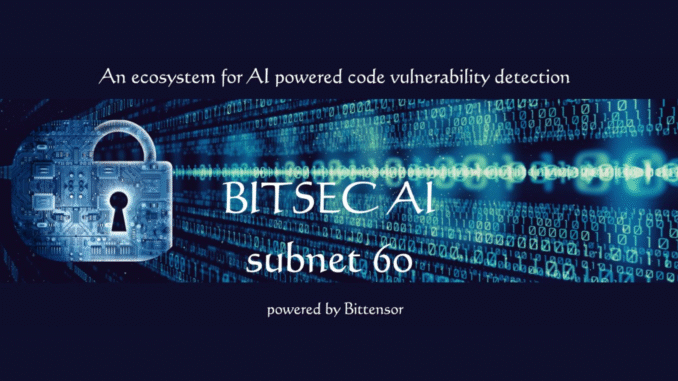
By: CryptoZPunisher
2025: The Year Cybersecurity Fell Behind
In 2025 alone, over $2.5 billion has been stolen through hacks, exploits, and theft across DeFi and Web3. Just last week, Balancer, one of crypto’s oldest and most trusted protocols, lost nearly $100 million in a single exploit.
Audit firms can’t keep up. Reports arrive late, cost a fortune, and are often outdated by the time they’re published. Meanwhile, hackers have evolved, they use AI to read and attack code faster than any human team ever could.
Web3 is bleeding. And centralized solutions can’t stop the hemorrhage.
Bitsec: Automating Security, Decentralizing Trust
Enter Bitsec (Subnet 60), launched in early 2025. Its mission: rebuild cybersecurity around decentralized artificial intelligence.
“Manual audits are too slow, too expensive, and too inconsistent.” — John Yu, Founder of Bitsec
Bitsec replaces human auditors with open-source AI agents capable of scanning code, spotting vulnerabilities, and suggesting fixes at superhuman speed.
And the proof is already there: Bitsec’s V1 agents uncovered over $275 million worth of vulnerabilities in production systems, including Virtuals, Stargaze, and Lium (Subnet 51).
But V1 was just a prototype. With V2, Bitsec is going all-in on scalability, competition, and real revenue.
Bitsec V2 — Smarter, Faster, and Finally Profitable
Announced on November 4, 2025, Bitsec’s V2 represents a fundamental redesign, an open, competitive system for AI-powered security auditing.
Here’s how it works:
- Miners now submit their own open-source AI agent files, each trained to detect code vulnerabilities.
- These agents are evaluated on real-world benchmarks derived from recent code audits (SCA-Bench).
- Validators assess accuracy, depth, and speed, rewarding the best-performing agents in TAO.
The best survive. The rest disappear. Each cycle makes the network smarter, creating a Darwinian evolution of cybersecurity.
Inspired by Ridges (SN62): When Competition Breeds Intelligence
Bitsec V2 draws direct inspiration from Ridges (Subnet 62) — the project that showed what happens when AI agents are allowed to compete freely. In Ridges, benchmark performance skyrocketed as agents pushed each other to evolve faster than any centralized model could.
Bitsec applies the same principle to security. Each agent is tested on real codebases, competing to find vulnerabilities faster and more accurately than its peers. It’s an evolutionary feedback loop where rivalry drives progress.
What once took weeks of human research can now improve in real time, powered by open competition between intelligent systems.
Competition isn’t a risk, it’s the engine of innovation.
A Self-Funding Economic Model
“The easy money is in audit competitions and bug bounties. From there, we expand.” — John Yu, Bitsec Developer
Bitsec doesn’t rely on traditional clients or fundraising rounds, it monetizes cybersecurity directly.
The network already participates in seven competitive audit platforms, each offering between $25K and $1M in weekly rewards. In 2024, one solo researcher on Code4rena earned $681K — proof that the opportunity is real and liquid.
When Cetus Protocol was hacked for $250M, Bitsec identified the same vulnerability used by the hacker, in under 15 minutes. Findings like that often earn millions in bug bounties.
Every win boosts Bitsec’s credibility, and in this system, credibility directly equals revenue. Public leaderboards replace sales teams: the scoreboard is the business model.
Connecting TAO Incentives and Real-World Revenue
Bitsec plans to integrate x402, a payment protocol designed for autonomous agents. This integration will allow the network to handle economic transactions seamlessly while keeping Bittensor as its core incentive layer (TAO rewards).
The Bitsec V2 Pipeline
- Phase 1: Automated audits for smart contracts and Bittensor subnets.
- Phase 2: Large-scale participation in audit competitions and bug bounties.
- Phase 3: Expansion into Web2 security, LLM audits, and “vibe code” validation, the review of AI-generated code.
“These aren’t Bittensor-specific agents. They’re AI systems that find and fix vulnerabilities anywhere, simply powered by Bittensor’s incentive mechanism.” — John Yu
Bitsec doesn’t just aim to secure Web3. It aims to become the universal cybersecurity layer of decentralized intelligence.
ELI5
Imagine an army of little AI robots. Each one reads code line by line, searching for traps that humans can’t see. When one robot finds a bug before the others, it earns a reward. The weaker ones disappear. The best ones evolve.
That’s Bitsec, a decentralized competition of intelligent agents making code safer, and this time, actually making money doing it.
Why It Matters for Investors
Bitsec V2 is the first Bittensor subnet to connect AI, cybersecurity, and real-world revenue. It proves that TAO-based incentives can power profitable, real economic activity, starting with a market worth $1.5B+ in smart contract auditing alone.
Ridges proved that competition makes AI smarter. Bitsec proves it can also make AI profitable.
It’s both a technological and economic proof of concept for Bittensor and a clear signal that subnets capable of generating real cash flow will anchor the network’s long-term value.

Useful Links
- Official website: bitsec.ai
- GitHub: github.com/Bitsec-AI/subnet
- X (Bitsec): @bitsecai
- John Yu (Founder): @yubrew
- Yuma Group: @YumaGroup @BarrySilbert — subsidiary of Digital Currency Group (DCG), focused on accelerating decentralized intelligence.
- Discord | #ذ・bitsec・60 | Bittensor
- taostats.io/subnets/60/chart


Be the first to comment